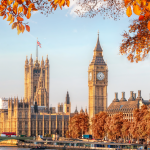Last week’s Autumn Statement was a far cry from the mini budget of just two months ago. Tax cuts and other giveaways were not so much halted as reversed. The UK now faces its greatest tax burden for 77 years.
With imposts up and public expenditure down (albeit from 2025), businesses and consumers are in for tough times ahead. Higher interest rates will affect not only companies and homeowners; public sector debt interest will reach £100 billion per annum by 2027. Stagflation is back for the first time in decades; unemployment is forecast to increase from 3.6% to 4.9% by 2024, whilst CPI will remain above target beyond 2023.
There were, however, some glimmers of hope. We saw a return to a more sober form of economic policymaking in which government self-imposed checks and balances such as Bank of England independence and scrutiny by the Office of Budget Responsibility were re-established. Changes to R&D were perhaps not as draconian as many feared, and on business rates, the Chancellor abolished so called downwards transitional reliefs caps. This should benefit some London businesses such as those in the retail sector, where valuations have fallen since 2017. Support for businesses to help mitigate the impact of valuation increases were also signalled. The London Property Alliance included these ideas in its submission earlier this year, which you can read here.
A wider question around where economic growth is going to come from in the future remains largely unanswered. Questions on EU trade, immigration and housing remain pretty much unanswered. As the government turns its mind to supply side reforms, it would be well advised to look closely at policies designed to support good growth, competitiveness, and employment in London – the engine room of the UK economy – and the gateway for inward investment for the country as a whole.


